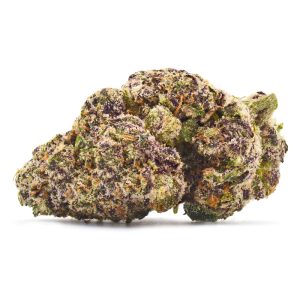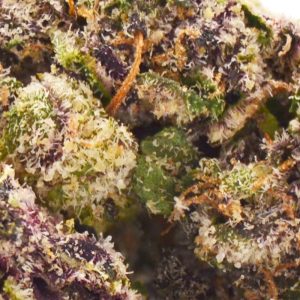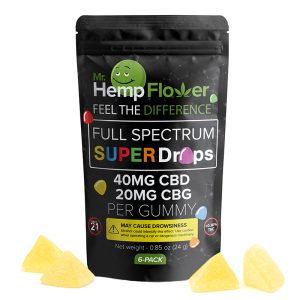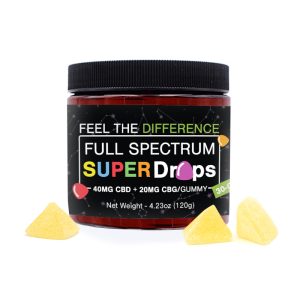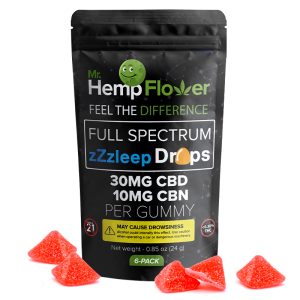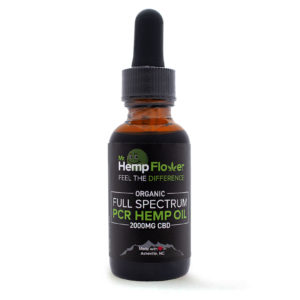Phytocannabinoid … What Are They Exactly? See Here
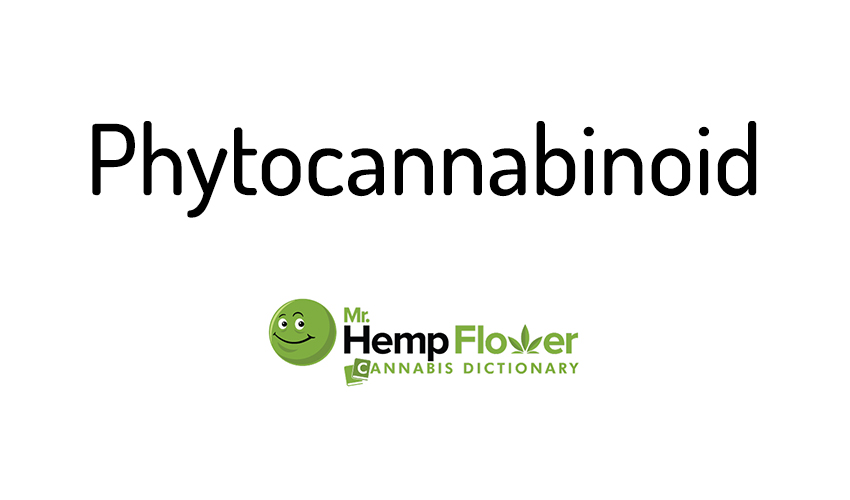
Phytocannabinoid
ˌfī-tō- kə-ˈna-bə-ˌnȯid | Noun
Phytocannabinoids are cannabinoids produced in the trichomes of the cannabis plant (both hemp and marijuana). The rise of phytocannabinoids like cannabidiol (CBD) and tetrahydrocannabinol (THC) made the cannabis plant popular in recent years. Extensive research confirms the therapeutic benefits of these compounds when they interact with the receptors in the body.
“People are getting more and more interested in different cannabis phytocannabinoids and their therapeutic effects.”
“Did you know that the hemp plant contains over 100 phytocannabinoids?”
What are Phytocannabinoids?
Cannabinoids are lipophilic molecules that interact with the body’s endocannabinoid system (ECS) — a complex cell signaling system that balances immune response. Depending on the source, cannabinoids fall into two categories, phytocannabinoids and endocannabinoids.
Phytocannabinoids are plant-derived cannabinoids produced in the trichomes or resin glands that cover the surface of the cannabis plant. Trichomes produce and house the plant’s most desirable compounds — cannabinoids and terpenes. So far, scientists have discovered over 140 phytocannabinoids but have researched only the most prominent ones, like cannabidiol (CBD) and tetrahydrocannabinol (THC).
Differences Between Phytocannabinoids and Cannabinoids
The term cannabinoid signifies a broad class of chemical compounds produced by various biological species. The two main cannabinoid categories are phytocannabinoids and endocannabinoids. The first group is produced by plants, and the second group by mammals. Endocannabinoids (endogenous) are produced in the human body and play a significant role in its homeostasis (balance). They both activate the endocannabinoid system in the body.
To perform at its maximum capacity, every function in the body needs to be balanced out. When this balance is achieved, the body is in its peak state or homeostasis. The body has its own cannabinoid molecules to maintain this balance (endocannabinoids). This indicates that the body already has targets that the cannabis plant can activate when it’s off balance and experiences pain, inflammation, or insomnia. Endocannabinoids bind to the cannabinoid receptors in the body and brain, and activate a homeostatic effect that brings a balanced state of health. The endocannabinoid receptors are located on different organs in the body and are part of the ECS. An example of an endocannabinoid is anandamide, also known as the “bliss molecule.”
The body produces endocannabinoids in an “on demand” fashion but may still face some deficiencies. Consuming phytocannabinoids may make up for that deficiency and produce more medicinal effects. Phytocannabinoids can cause intoxication because they are external molecules, which doesn’t happen with endocannabinoids.
The Real Purpose of Phytocannabinoids
Why does the hemp plant produce phytocannabinoids? The human body produces these molecules to achieve a state of balance and survival. The cannabis plant does the same thing because phytocannabinoids are a response to external pressures. They cover the plant’s surface as a defense against environmental hazards like insect predators and extreme weather conditions.
How Are They Produced?
They are fabricated through the process of biosynthesis. Biosynthesis is a multi-step process in which enzymes trigger a series of chemical reactions that use simple molecules to create complex ones. The enzymes responsible for the production of cannabinoids are cannabidiolic acid (CBDA) synthase, tetrahydrocannabinolic acid (THCA) synthase, and cannabichromenic acid (CBCA) synthase.
These enzymes convert the central cannabinoid precursors cannabigerolic acid (CBGA) and cannabigerovarin acid (CBGVA) and turn them into the acidic forms of the neutral cannabinoids CBDA, THCA, and CBCA.
The acidic forms of cannabinoids are further altered via decarboxylation (applying heat). Through decarboxylation, a chemical compound loses carbon atoms and releases carbon dioxide. So, when exposed to heat, THCA and CBDA turn into THC and CBD, respectively, which are their neutral forms that exhibit psychoactive and other benefits.
Phytocannabinoids can be further metabolized or broken down into other cannabinoids. If exposed to oxygen from prolonged storage, CBD may oxidize into the metabolites cannabielsoin (CBE) and cannabidinodiol (CBND).
How They Interact with the Endocannabinoid System
The endocannabinoid system is made of three main components that help the body maintain functional balance. These three components are:
- Endocannabinoids or the “messenger” molecules synthesized by our body
- Cannabinoid receptors or the receptors that these molecules bind to; and
- Enzymes that break these molecules down
The endocannabinoid system regulates important functions like pain, stress, energy metabolism, reproduction, appetite, motivation, and sleep. There are two types of cannabinoid receptors in the body: CB1 and CB2.
The CB1 receptors are located in the central nervous system and regulate a variety of functions. These receptors are the most widely expressed protein of their kind in the brain. One of the CB1 receptor’s key roles is to control the timing and frequency of the release of other neurotransmitters like dopamine, serotonin, and glutamate.
The CB2 receptors are located on immune cells, and few select brain regions. These receptors circulate throughout the body and brain via the bloodstream, governing immune responses like pain and inflammation. Phytocannabinoids interact with the endocannabinoid system by binding to the CB1 and CB2 receptors, getting the body to respond to their influence.
Some people react better to cannabinoids than others because everyone has a unique endocannabinoid system. The number of cannabinoid receptors in each body varies together with the rate of endocannabinoid production. Prolonged cannabis use causes a reduced number of CB1 receptors available for activation in the brain. The process is reversible and 48 hours of abstinence from cannabis can resensitize the brain. Abstinence brings the levels of these proteins to the levels of a non-cannabis user.
What is the Entourage Effect?
Cannabis is a special plant that contains hundreds of molecules that interact with our bodies both separately and in synergy. While cannabinoids are unique to the cannabis plant, other plant-derived molecules like flavonoids and terpenes play an important role in the overall effects of the plant. They bind to our cells and influence the cannabis experience. Each of these compounds works synergistically with one another, potentially enhancing the most desirable effects. This relationship between all cannabis compounds is known as the entourage or ensemble effect.
Therepenes play an essential role in the entourage effects because they potentially enhance the therapeutic potency of major cannabinoids like THC and CBD.
Dr. Raphael Mechoulam, the world-renewed cannabis researcher, coined the term “entourage effect” to explain that the combination of several cannabis compounds yields more potent effects as opposed to a single isolated compound. As of lately, this phenomenon of cooperation between cannabis compounds has been described with the term ensemble effect.
Primary and Secondary Phytocannabinoids and Their Benefits
A growing body of research suggests that these compounds can reduce pain, inflammation, anxiety, help with sleep, and provide other benefits. From medical to therapeutic, these prominent phytocannabinoids offer a wide range of health and wellness properties.
Cannabidiol (CBD)
Cannabidiol is the most abundant compound in hemp and the second most abundant in cannabis. As a non-psychotropic cannabinoid (doesn’t get the user high), CBD became the first cannabis compound to hit the mainstream. A lot of people know about the benefits of this plant and have decided to join the revolution because of this compound. You can find full spectrum, broad spectrum CBD concentrates and isolates sold lawfully in almost every state in the United States.
This cannabinoid offers many potential therapeutic benefits, including analgesic, anti-inflammatory, anti-anxiety, and anti-epileptic properties. It can be extracted from both hemp and marijuana, so make sure to check the origin of the plant when buying a CBD product.
Cannabidiolic Acid (CBDA)
Cannabidiolic acid is a precursor of CBD and turns into cannabidiol through decarboxylation (heating). So, if you decide to add some CBD concentrate into your meals in its raw form, you are ingesting CBDA, not CBD. This compound won’t produce any beneficial effects until you heat it. Researchers are investigating this cannabinoid, but animal studies show that it could be a helpful anti-inflammatory and anti-nausea agent.
Delta-9-Tetrahydrocannabinol (THC)
Delta-9 THC or THC is the main intoxicating cannabinoid of cannabis. This compound is present in less than 0.3% in hemp and 20 to 30% in marijuana. The intoxicating effects of this compound are a result of the activation of the CB1 receptor in the brain.
THC intoxication increases blood flow to the prefrontal cortex and can trigger feelings of euphoria. The prefrontal cortex is the region of the brain responsible for attention, decision-making, and motor skills, among others. The exact effects of this compound vary from person to person. Its ability to relieve pain comes from its interaction with certain CB1 receptors.
Tetrahydrocannabinolic Acid (THCA)
THCA is the most common cannabinoid in raw marijuana flower. It’s a non-intoxicating (doesn’t get you high) compound that converts to the main intoxicating agent in cannabis, THC when exposed to heat (decarboxylation). It’s a less known cannabinoid that shows potential for treating inflammation, nausea, and vomiting.
Delta-8-Tetrahydrocannabinol (Delta-8-THC)
A close relative of delta-9 THC, delta-8 THC differs from the main psychotropic compound in cannabis by the placement of one double bond. Shortly put, they are considered sister molecules. Delta-8-THC shows huge potential in treating nausea and vomiting, especially in children. More research is needed on this compound, but there are indications that it’s up to 50% less intoxicating than delta-9.
Cannabidivarin (CBDV)
A relative of CBD, CBDV also comes from the same precursor CBGVA. Research shows that this compound has potential anti-epileptic and anticonvulsant properties.
Cannabidivarinic Acid (CBDVA)
This compound is the acidic form of CBDV present in raw cannabis.
Cannabigerol (CBG)
CBG is a well-known compound mainly due to its presence in CBG-dominant hemp flower stains available on the market. It weakly binds to both CB1 and CB2 receptors and shows potential in treating Huntington’s, irritable bowel disease, and appetite stimulation. Cannabigerol also inhibits the endocannabinoid anandamide, referred to as the “bliss molecule.”
Cannabinol (CBN)
Old or aging cannabis is likely to have CBN in it because this compound is a degraded form of THC. Cannabinol is known for its sedative effects, so people use it as a sleep aid. We need more research to confirm its effects on sleep. But, this cannabinoid has potential in fighting pain, bacteria, and inflammation. It’s known to stimulate appetite and help with bone regeneration.
Cannabichromene (CBC)
This compound is the decarboxylated form of cannabichromene carboxylic acid (CBCA) and may alleviate pain and boost neural cells that help with brain function.
Tetrahydrocannabivarin (THCV)
Found in the cannabis plant in trace amounts, this compound may contribute to the anticonvulsant and anti-epileptic effects of the plant. We need more research on this compound, but some studies suggest that it may be useful in treating obesity.
Tetrahydrocannabivaric acid (THCVA)
This compound is the acidic form of THCV, and researchers are still looking at its potential effects.
Cannabis Chemotypes
A cannabis chemotype is a term that refers to classifying different cannabis varieties based on their chemical profile. Classifying cannabis plants as chemotypes indicates that each plant is a distinct entity with different levels of cannabinoids and terpenes.
Cultivated Varieties
Selective breeding has created cultivars or strains with a predominant CBD and THC expression. But, research suggests that one cultivated variety doesn’t express one unifying chemotype but a spectrum of chemotypes. This means that two cannabis plants of the same variety may have slightly different chemical expressions. In other words, every chemotype contains a unique percentage of cannabinoids and terpenes, so the ideal classification of the plants would be by their cannabinoid and terpene content.
One study investigated the cannabinoid and terpene expression in a range of cannabis plants and concluded that the current indica/sativa/hybrid classification doesn’t do the plant justice. The best approach would be to classify cannabis based on the cannabinoid/terpene content and based on that to identify their medical uses.
Phytocannabinoid-Rich Hemp
Also known as full spectrum or whole-plant hemp, phytocannabinoid-rich hemp is the hemp plant in its full potency and range of naturally occurring phytocannabinoids. Hemp plants don’t produce as much THC as marijuana, so phytocannabinoid-rich hemp doesn’t contain the same concentration of this cannabinoid as other cannabis plants.
The low levels of THC in the hemp plant have become its defining feature. Luckily, breeders created a range of varieties that offer the same cannabinoid profile as marijuana, only without the THC. Consuming all of the phytocannabinoids found in hemp together produces the entourage effect and increases the plant’s medicinal potential.
Because this cannabis variety contains under 0.3% THC, it is entirely legal to use in the U.S., while marijuana is only legal for recreational use in a few states. After President Trump signed the 2018 Agricultural Act, hemp is no longer considered a Schedule I substance. Now, it’s legal to grow and cultivate hemp and produce hemp-derived products like CBD oil and hemp flower. All of these products give users the benefits of the cannabis plant without the side-effects and intoxication of THC.
Types of Phytocannabinoid Products
There are several types of phytocannabinoid products that fall under two major categories. The first one are concentrates that contain phytocannabinoids and other nutrients in their pure, individual form. The other one is phytocannabinoids as an ingredient infused in cannabis goods.
Concentrates
All extracts (isolates) and concentrates fall under the umbrella term “concentrates.” Meaning, all extracts are concentrates, but not all concentrates are extracts. These products have become popular in recent years because they accumulate the most desirable properties from cannabis trichomes into one product. Cannabis trichomes are resin glands or “tiny hairs” that house cannabinoids and terpenes and give the plant it’s frosty look.
Manufacturers use various methods to produce concentrates and extracts by pressuring, sieving, or purging the resin glands. Some of these methods don’t use a solvent and yield pure, clean products, while others use a solvent like butane and ethanol. Each time you use a full spectrum extract, distillate, wax, shatter, or sauce, you are using a form of cannabis concentrate.
CBD isolates or extractions of a single phytocannabinoid or terpene are the reason why hemp CBD became mainstream. So many people started using CBD isolate because it doesn’t produce the intoxicating effects that THC does.
Now, the rise of crystalline and other concentrates that are not tinctures made users interested in other forms of cannabidiol. CBD crystalline is a pure concentration of CBD or another single cannabinoid, and this is its biggest advantage and downside at the same time. As a pure extract of one cannabinoid, crystalline may not be as potent as a full spectrum cannabis extract. Without the terpenes and other cannabinoids, the entourage effect is not present.
Ingredients in Cannabis Goods
Today’s market offers a wide selection of high-quality baked goods, beverages, and all sorts of treats infused with cannabis flower (weed or hemp flower) or concentrate. Cannabis-infused edibles are delicious and easy to consume. They offer the effects of phytocannabinoids without having to smoke or vaporize them.
Inhalation and sublingual consumption result in fast delivery of the compounds and potent effects. Compared to them, edibles are metabolized through the digestive system and the liver, which results in delayed onset that can take between 45 and 180 minutes. The duration of the effects can vary.
Tinctures are concentrated extracts placed in a liquid like alcohol, or glycerin. They are often referred to as phytocannabinoid diols, which is basically an alcohol-based cannabis extract. These products were adopted as a medicine in the mid-to-late 19th century when the West adopted the use of medical cannabis. Cannabis for medical purposes reached its peak in Europe and the U.S. during the 1890s in the form of extracts and tinctures.
After legalization of hemp and marijuana in many parts of the world, tinctures have made a comeback. These products allow the user to administer constant doses of phytocannabinoids, which is essential for medical purposes.
Topicals come in the form of lotions, oils, sprays, soaps, patches, lubricants, bath salts, and blams. They are applied to the skin and absorbed into the bloodstream at a slower rate than inhalation or oral consumption. Topicals contain other ingredients like essential oils and organic materials and are felt immediately after application.
Final Thoughts
Phytocannabinoids are an essential part of the cannabis plant and offer a wide range of medicinal benefits.

